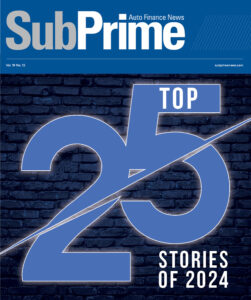Despite robust Q1 consumer spending fuel by auto, 3 in 10 consumers feel credit insecure

Comerica Bank pointed out that first-quarter consumer spending — which accounts for two-thirds of the U.S. economy — generated its most robust gain since the second quarter of 2021.
However, more than three in 10 consumers are experiencing credit insecurity, according to a study by Sezzle conducted in partnership with PYMNTS.
In a project that might gauge applicants flowing into your underwriting department, Sezzle and PYMNTS collaborated on a survey of 2,678 consumers conducted from Feb. 22 to March 1. The survey assessed consumers’ borrowing habits and relationship with credit in regard to ease of access, variety of products available, and experience in applying or being rejected, as well as the financial impact of life events.
Consumers were grouped into three categories: credit secure, credit marginalized, and credit avoidant. Sezzle and PYMNTS defined these consumers as
—Credit secure: Consumers who can reliably access new lines of credit.
—Credit marginalized: Consumers who have been rejected for at least one credit product in the past 12 months.
—Credit avoidant: Consumers who did not use credit products in the past 12 months and have no interest in applying for them.
Along with that insecurity finding, Sezzle and PYMNTS discovered 25% of consumers have been rejected by at least one credit product in the last year, and fear of being rejected keeps credit insecure consumers from applying for new credit products.
Sezzle and PYMNTS also mentioned about eight out of 10 Credit Insecure consumers report life events that negatively affected their financial situations in the last year, while less than one-third of consumers have a good understanding of which activities can improve their credit scores.
“Credit insecurity does not just mean a poor credit score. It gives definition to the millions of young shoppers out there who are wary of credit, but understand its necessity in their financial journey,” Sezzle CEO Charlie Youakim said in a news release.
Perhaps reinforcing what that consumer credit survey showed, Comerica Bank chief economist Bill Adams and senior economist Waran Bhahirethan pointed out that the American economy grew 1.1% annualized in the first quarter, below consensus expectations for a 2.0% expansion.
“While the headline figure disappointed, the underlying details were more positive,” Adams and Bhahirethan said in an analysis, noting the consumer spending trend.
Adams and Bhahirethan reported household spending on goods jumped 6.5%, ending four consecutive quarterly declines, and was led by purchases of automobiles. They also mentioned household expenditures on services rose by a “respectable” 2.3%.
“The Federal Reserve is expected to raise the policy rate another quarter percentage point at their monetary policy decision Wednesday and signal that the current rate hike cycle is ending. The FOMC will likely reiterate that they expect to hold interest rates unchanged through the end of 2023 but acknowledge that they are data dependent,” Adams and Bhahirethan said.
“Mild weather in the first two months of the year likely pulled forward demand, contributing to stronger-than-expected consumer spending in (last) week’s GDP report,” they continued. “Going forward, the economy is likely to slow further as high inflation, high interest rates, and tighter financial conditions constrain growth. At the same time, inflation is still too high, especially inflation in labor-intensive services which the Fed worries will persist even if gasoline or food prices fall.
“The Fed is stuck between raising interest rates and likely pushing the economy into a recession on the one hand, or pausing on the other hand and risk that inflation reaccelerates if the economy regains momentum,” Adams and Bhahirethan added.

 View The Latest Edition
View The Latest Edition

